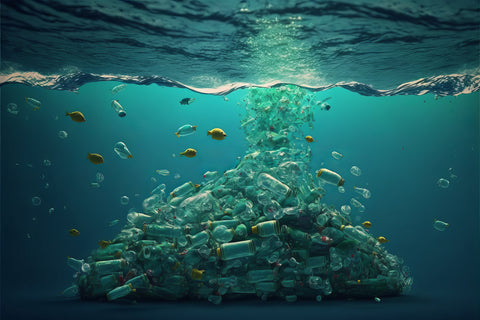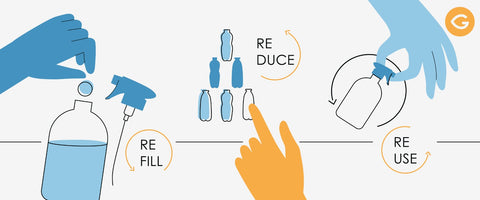The issue of microplastics and their effects on the environment and human health is a growing concern. Microplastics are tiny particles of plastic measuring less than 5mm in size and are found in a variety of products, including cosmetics, cleaning products, and even clothing. These particles are prevalent in our oceans, where they are ingested by marine life and can ultimately end up in our food supply.
But the dangers of microplastics go beyond just the impact on marine life.
Recent studies have found that microplastics are also present in the human body, with particles found in our blood, organs, and even in the placenta of unborn babies. The exact consequences of this exposure are not yet fully understood, but studies have linked microplastics to a variety of health issues, including reproductive and developmental problems, immune system dysfunction, and cancer.
One of the biggest sources of microplastics in our oceans is from single-use plastic products, such as water bottles, straws, and plastic bags. These products are used for a few minutes and then discarded, often ending up in the ocean where they can take hundreds of years to degrade.
Refillable glass bottles and water-soluble cleaning tablets are a more sustainable solution to traditional single-use plastic products. By using refillable glass bottles, we can significantly reduce the amount of plastic waste produced, and by using water-soluble cleaning tablets, we can eliminate the need for plastic packaging.
In addition to being more environmentally friendly, these products also have other benefits. Refillable glass bottles are safer to use and store, as they don’t contain harmful chemicals found in plastic bottles. Water-soluble cleaning tablets are also more efficient, as they take up less space and are easy to store.
In conclusion, microplastics are a serious problem that affects not only the environment but also human health. By switching to more sustainable products such as refillable glass bottles and water-soluble cleaning tablets, we can make a significant impact in reducing the amount of microplastics in our oceans and ultimately in our body. It’s time for us to take action and make a change for a better future for ourselves and for the planet.




